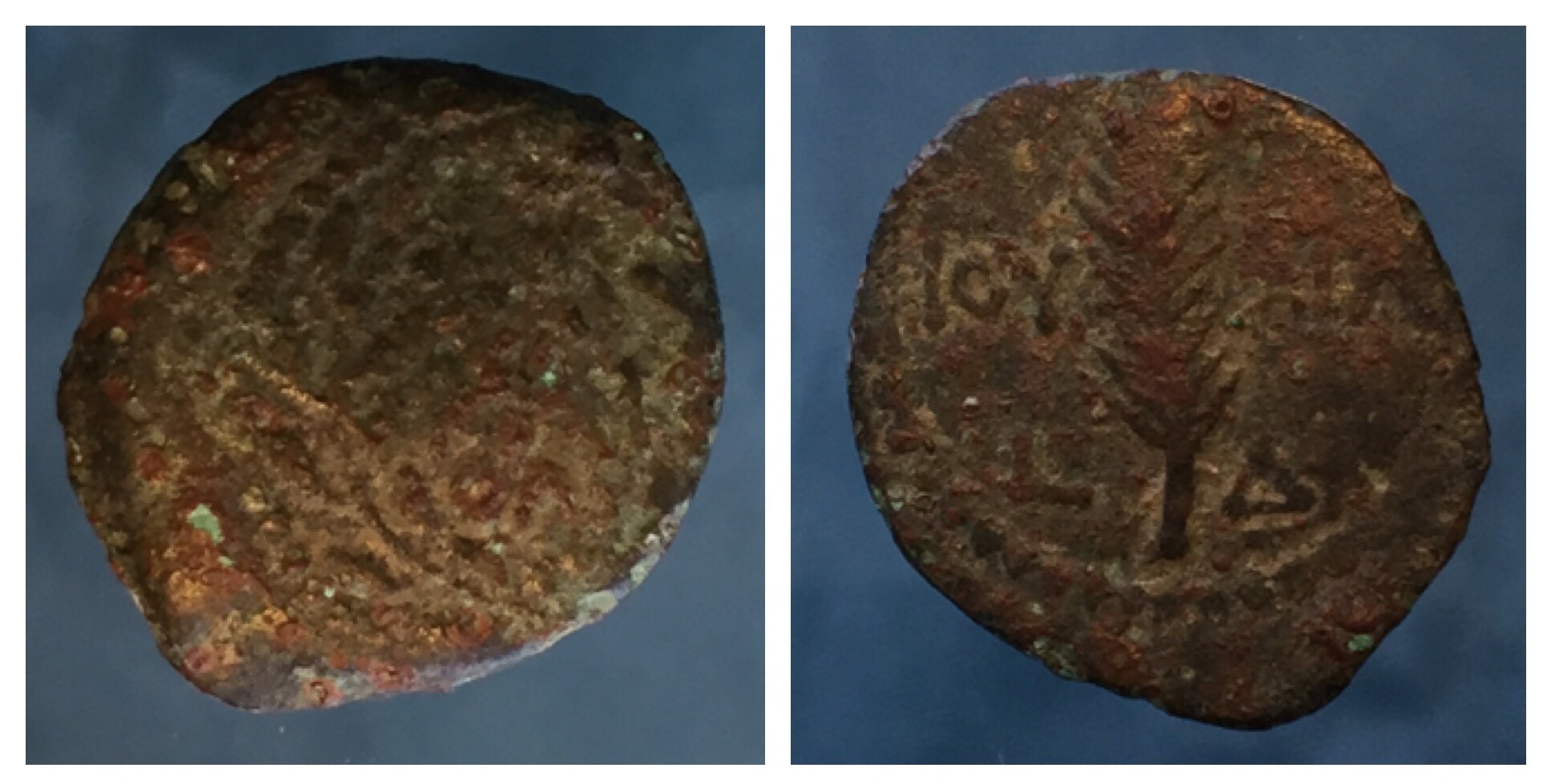Roger Uselton Collection of Ancient and Biblical Coins
Coin Detail
- Uselton Catalog #: 7
- Class: Biblical
- Ruling Authority: Valerius Gratus (15-26 A.D.)
- Date Struck: 17-18 A.D.
- Type: AE (bronze) prutah
- Size: 14.61 mm.
- Weight: 2.25 g.
- Die Axis:
- Obverse: TIB / KAI / CAP (Tiberius Caesar) in a wreath tied at base with an X.
- Reverse: Palm branch curving to right, IOYΛIA (Julia) and L Δ year 4) across fields.
- Exergue:
- References: Meshorer 327; Hendin 645; RPC I 4964.
- Original #: 7
“Valerius Gratus was Prefect of Judea for 11 years having been appointed by Tiberius immediately after Augustus’ death. He minted several coins in Judea honoring Tiberius and Julia Augusta (Tiberius’ mother and Augustus’ wife and formerly known as Livia Drusilla).” The Julia on the reverse, then, is in honor of Tiberius’s mother.
Valerius Gratus was the immediate predecessor to Pontius Pilate: “And, as a further attestation to what I say of the dilatory nature of Tiberius, I appeal to this his practice itself; for although he were emperor twenty-two years, he sent in all but two procurator to govern the nation of the Jews. Gratus, and his successor in the government, Pilate.” - Josephus, Antiquities VIII, VI, 5.
“Valerius Gratus was the Roman Prefect of Iudaea province under Tiberius from 15 to 26 AD. He succeeded Annius Rufus and was replaced by Pontius Pilate. The government of Gratus is chiefly remarkable for the frequent changes he made in the appointment of the high-priesthood. He deposed Ananus, and substituted Ishmael ben Fabus, then Eleazar, son of Arianus, then Simon, son of Camith, and lastly Joseph Caiaphas, the son-in-law of Ananus.” –Wiki
“Herod’s son who ruled in Jerusalem, Archelaus, was incompetent so the Romans appointed governors, termed procurators. Most of them, with the exception of Pontius Pilate, respected Jewish religious sensitivities and struck coins with neutral motifs, drawn largely from the seven agricultural species of Israel.” –L. Alexander Wolfe

